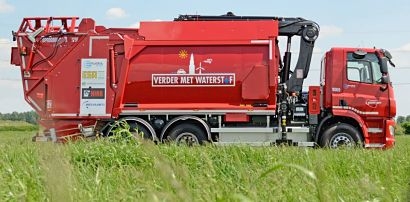
Renova’s end customer, the City of Gothenburg, wants to increase testing of fuel cell powered refuse trucks. The truck and its operation will be partly funded by the EU project REVIVE (Refuse Vehicle Innovation and Validation in Europe) which has an objective to accelerate the development of hydrogen fueled refuse trucks in Europe.
PowerCell has previously participated in a joint project with Renova, Scania, truck body manufacturer JOAB and the Royal Institute of Technology, to develop a fuel cell electric refuse truck which uses a fuel cell to power an on-board electric motor and refuse compactor. That project was partly funded by the Swedish Energy Agency.
Hydrogen fuel cell trucks have a comparable driving range, refuelling time and payload capacity to diesel-powered trucks while producing less noise and emitting only water vapour which are welcomed advantages for refuse trucks operating in residential areas with early morning collection times.
Both PowerCell and Renova have recently been approved as project partners in REVIVE, which will partly fund the fuel cell integration and operation of the new refuse truck. This project has received funding from the Fuel Cells and Hydrogen 2 Joint Undertaking under grant agreement No.779589. This Joint Undertaking receives support from the European Union’s Horizon 2020 research and innovation programme, Hydrogen Europe and Hydrogen Europe Research.
“Over the years, the FCH JU has supported the development of fuel cell components for transport applications” said Bart Biebuyck, FCH JU Executive Director. “We are glad to see these efforts coming to fruition and another European stack supplier joining the REVIVE project with its innovative products for heavy-duty applications.”
The project has been in development for over four years, supporting the introduction of fuel cell refuse trucks in several cities across Europe. The overall aim of the project is to speed up the introduction of zero emissions solutions for refuse trucks. Refuse trucks operate on fixed routes and return to their starting point at the end of each shift, which eliminates the requirement for an extensive network of hydrogen filling stations and makes the vehicles ideal for testing fuel cell technology.
For additional information:

